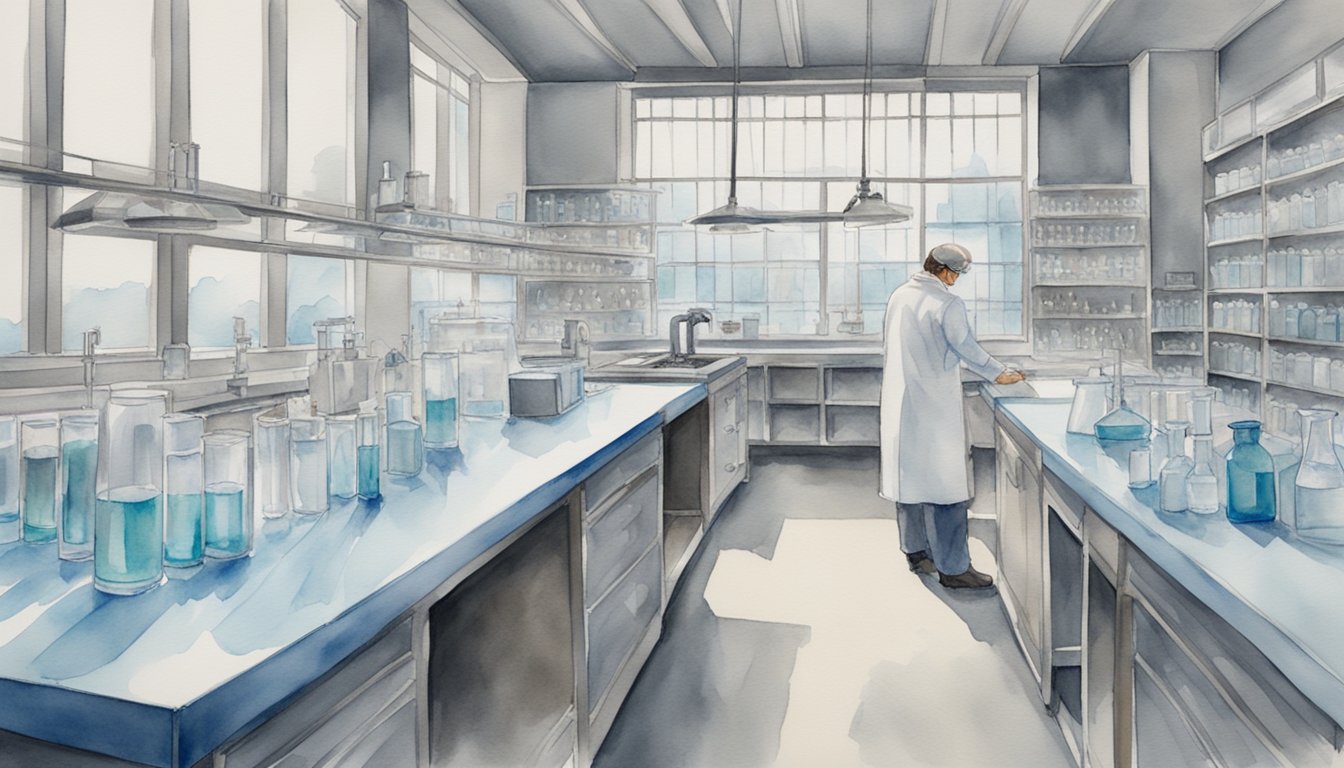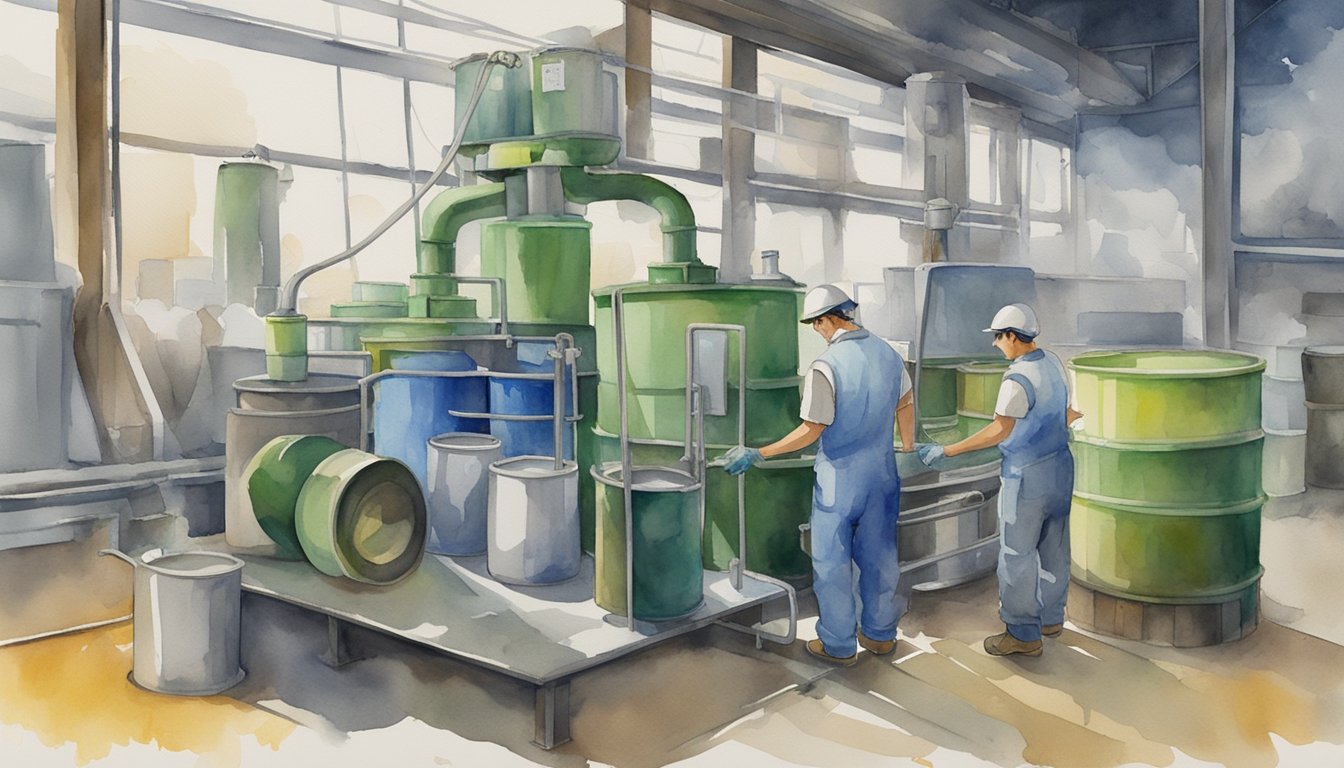Optimizing solvent gradients in high-performance liquid chromatography (HPLC) plays a major role in achieving reliable, high-resolution separations. A clear understanding of gradient elution principles can directly impact performance in both reversed-phase and normal-phase HPLC workflows. By carefully controlling parameters such as solvent strength, gradient slope, and total run time, analysts can improve resolution while also reducing overall analysis time and solvent usage.
Gradient parameters—such as the type of organic modifier, initial and final concentrations, and gradient length—can have a pronounced effect on both the selectivity and efficiency of a method. Selecting appropriate mobile phase components and systematically adjusting their ratios allows for greater control over analyte retention and elution profiles. Exploring different gradient shapes (linear, step, or multi-segment) can also help address common method development challenges, including co-elution and baseline drift.
Competence in gradient method development contributes to consistent system performance, particularly when working with complex sample matrices or closely eluting compounds. Incorporating strategies such as column selection, temperature control, and flow rate optimization further expands the method's robustness. A thoughtful approach to gradient design not only supports reproducible separations but also facilitates troubleshooting when retention, resolution, or peak shape issues arise.
Fundamentals of Gradient Elution
Gradient elution involves gradually changing the mobile phase composition to enhance the resolution of analytes with similar retention characteristics by exploiting differences in their mobile phase solubilities. Adjusting the composition of the mobile phase can increase its elution strength over time. This helps analytes that interact strongly with the stationary phase to elute within a reasonable timeframe.
A key parameter is the gradient slope, which determines how quickly the mobile phase composition changes. Steeper slopes can shorten analysis time but may reduce resolution, while a shallower slope might improve separation but increase the duration.
In practice, it is best to select a starting and ending mobile phase that optimizes the separation. The initial mobile phase composition should be weak enough to separate analytes with limited stationary phase interaction, while the final composition and gradient slope should increase elution strength to elute analytes with higher stationary phase affinities while maintaining good separation. Using these principles, you can effectively design a gradient that balances resolution and analysis time.
Effect of Gradient Slope and Time
A steeper gradient can increase speed but may reduce resolution between closely eluting peaks. Conversely, a gentler slope might improve resolution but extend analysis time. You might start with a scouting gradient and then refine it to find a balance between speed and resolution. In practice, achieving this requires careful experimentation and evaluation of results to make sure target compounds are well resolved without unnecessary time extension.
Impact of Flow Rate on Separation
Higher flow rates can shorten run times, but they may also reduce interaction time between analytes and the stationary phase, potentially decreasing resolution. Conversely, lower flow rates might improve resolution by allowing more interaction time, but they also extend the analysis time. By adjusting the flow rate of each solvent in a gradient method, you can optimize the gradient slope value.
Determining Optimum Mobile Phase Composition
The composition of the mobile phase significantly affects separation outcomes. By optimizing solvent type, strength, pH, and buffer concentration, you can achieve high separation efficiency and selectivity. A common starting point for mobile phase optimization involves using a scouting gradient, which provides initial insights. For example, a common approach might involve adjusting pH and acetonitrile concentrations in water depending on target analytes and column specifics. This process typically requires iterative testing, where mobile phase composition is adjusted while monitoring the impact on peak shape, retention time, and resolution.
Column Considerations in Gradient Optimization
Optimizing a gradient in High-Performance Liquid Chromatography (HPLC) involves careful consideration of several factors related to the column. Among these, column volume, length, and chemistry play active roles in achieving effective separation and resolution during analysis.
Influence of Column Volume and Length
When selecting a column for gradient optimization, you'll need to consider both the volume and length of the column. Larger column volumes typically increase retention time and can enhance separation but at the cost of longer analysis times. Conversely, smaller columns reduce analysis times but may compromise resolution.
When first optimizing a gradient, the length of the scouting gradient is often adjusted based on the column length. Shorter columns, like 75 mm, decrease analysis time and solvent use, while longer columns may increase retention time for better separation of compounds. For a good scouting gradient, consider a 10-minute gradient on a 10 cm column.
Selecting Appropriate Column Chemistry
The chemistry of your column determines how compounds interact with the stationary phase, influencing separation quality. Columns with different chemistries, such as C18 or C8 ("C" standing for "carbon"), can affect retention based on compound polarity. You should match column chemistry to the chemical nature of your analytes. Consider the particle size within the column as well, as smaller particles typically provide higher resolution. This requires an optimal blend of particle size and chemistry to suit your specific analysis needs.
Method Development Strategies
Successfully optimizing HPLC solvent gradients involves careful consideration of baseline retention factors and choosing between gradient and isocratic methods. Understanding these strategies can greatly improve the efficiency and effectiveness of your method development process with the right calculations.
Establishing Baseline Retention Factors
To begin method development, you should establish baseline retention factors. This process involves determining the average retention factor for compounds of interest. Evaluating these factors provides a foundation for optimizing separation conditions.
Retention Factor Formula:
The retention factor (k) is calculated as:
[ k = \frac{t_r - t_0}{t_0} ]
where (t_r) = time for a given compound to elute from the column, called the retention time; (t_0) = retention time of an analyte that does not interact with and is not retained in the column.
For the unretained compound, its retention time is the total flow rate of the mobile phase divided by the column volume and is often referred to as the column dead time.
A well-defined retention factor impacts separation quality and resolution by influencing the time analytes spend in the stationary phase relative to the mobile phase. Optimally, baseline retention factors are within a suitable range to facilitate effective adjustments during method development.
Evaluating the Gradient Method versus Isocratic Mode
Choosing between gradient and isocratic modes depends on the complexity of your sample. The gradient method involves varying solvent compositions during the run to more efficiently separate compounds with similar affinity to the stationary phase. This method is beneficial when the sample includes components with a wide range of polarities, promoting better resolution and peak shape.
Meanwhile, isocratic separations maintain a constant mobile phase composition. They are often used for simpler mixtures where sample components intrinsically have different retention rates due to different stationary phase affinity. This method is easier to control and reproduce but may not resolve complex mixtures as effectively.
When deciding between these methods, consider factors such as sample complexity, separation time, and efficiency. For more in-depth information on this topic, you can refer to resources like these insights on HPLC Method Optimization.
Analyzing Gradient Separations
When analyzing gradient separations, focus on the peak shape. An ideal Gaussian peak shape indicates effective separation and system performance. Peaks should be symmetric, indicating a consistent elution process. If peaks are tailing or fronting, adjustments may be necessary.
Referencing again the retention factor (k) calculated with the formula above, this measures how long a compound is retained in the column compared to a non-interacting standard.
The retention factor can be used to calculate the ratio of the molar concentration of an analyte, (W_s), in the stationary phase compared to the mobile phase, (W_m), by the following:
[ k = \frac{W_s}{ W_m} ]
Additionally, the retention factor can be converted to a volumetric form:
[ k = \frac{V_r - V_m}{V_m}]
where the retention volumes help compare different flow rates or column sizes.
A thorough analysis often involves varying the gradient separation parameters. Changes in gradient time can affect resolution. For instance, varying the gradient time can significantly alter the separation effectiveness.
Here’s a simple list to guide your optimization:
-
Start with a small and shallow gradient slope to ensure separation.
-
Adjust initial and final solvent mixture composition based on results.
-
Observe any changes in analyte retention to modify conditions appropriately to maintain separation while reducing runtime.
Controlling solvent miscibility over the entire gradient composition range prevents issues such as bubble formation and impacts on system pressure. Consistent analysis under these conditions yields reliable results. Adjustments to the solvent mixtures and column chemistry may also be necessary.
Operational Parameters and System Suitability
Optimizing operational parameters in High-Performance Liquid Chromatography (HPLC) includes understanding dwell volume and adjusting both sample injection and detector sensitivity to maintain system suitability.
Understanding System Dwell Volume
System dwell volume, or gradient delay volume, is the volume between the gradient mixer and the column inlet. This can influence solvent gradient development for short columns or gradients. Identify the dwell volume by consulting the LC manual or applying specific procedures, such as replacing the column with a short piece of HPLC tubing and using UV-absorbing mobile phases. By monitoring the detector and running gradients from 0-100% of the different solvents, you can identify the dwell volume and adjust the gradient profile accordingly.
When you accurately assess dwell volume, you facilitate consistent retention times and have finer control over analysis time. This minimizes unnecessary solvent consumption and helps guarantee precise solvent mixing.
Adjusting Sample Injection and Detector Sensitivity
Proper adjustment of sample injection parameters creates bolstering system suitability by maximizing your HPLC setup's capabilities. To reduce retention time variability, optimize the injection volume to prevent column overloading and peak distortion. Be sure sample solvent strength is compatible with the starting mobile phase to minimize peak broadening and calibrate detector sensitivity to maintain the integrity of your analysis. Adjust sensitivity settings based on the sample concentration and the required detection limits.
Incorporating Ion Exchange
When optimizing separations with charged analytes, consider how different column chemistries respond to changes in ionic strength. Fine-tuning ionic strength through buffer composition and concentration can modulate interactions between analytes and the stationary phase. The choice of buffer and its concentration can influence analyte retention by reducing electrostatic interactions between charged compounds and the stationary phase. Monitoring gradient conditions alongside ionic strength adjustments allows for tailored separations that accommodate complex mixtures. Adjusting these parameters can lead to enhanced separation of ionic species.
Troubleshooting Common Issues in Gradient Runs
When optimizing HPLC solvent gradients, address common issues that can affect the quality of your results. Key areas of concern include peak tailing, changes in solvent strength, and variations in retention time. Each of these factors can influence the accuracy and clarity of your gradient chromatogram.
Identifying and Resolving Peak Tailing
Peak tailing can distort the appearance of peaks in your gradient chromatogram, affecting peak areas and the separation of adjacent peaks. It's often caused by secondary interaction between analytes and unwanted active sites on the column, such as from impurity buildup on the column. To resolve this, ensure your column is well-conditioned and use high-purity solvents.
Regularly flushing the column with a strong mobile phase can help remove contaminants. Adjusting the pH of your mobile phase may also reduce tailing by preventing unwanted interactions between analytes and the buildup of impurities in the column packing.
Selecting a stationary phase with properties tailored to the analytes of interest—such as controlled surface activity, optimized functional groups, or appropriate end-capping—can minimize secondary interactions and improve peak shape while maintaining effective retention and selectivity. Monitor peak symmetry regularly to catch early signs of tailing and address them quickly.
Managing Changes in Solvent Strength
An abrupt change in solvent strength can lead to unexpected shifts in peak retention times or poor separation. Gradual changes in gradient programs can mitigate these issues for smooth transitions between solvents. Regularly check for leaks in the system, as they might alter solvent ratios and affect the gradient profile. Make sure the mixing system is working properly to maintain the correct proportions of solvents throughout the run.
Consider using auto-sampler programming to assist with gradient optimization, which can help maintain consistent solvent strength across the gradient and different runs and analytes. Using high-quality mobile phase modifiers can further stabilize solvent strength.
Handling Variations in Retention Time
Variations in retention time can lead to difficulties in identifying and quantifying peaks accurately. To manage this, use precise and consistent gradient methods to minimize deviations. Check and calibrate flow rates regularly, as inconsistencies can impact retention times.
Monitor the dwell volume, as variations can affect the ruggedness of gradient separations. Adjusting method parameters, such as initial hold time, to account for the dwell volume helps maintain retention time consistency.
Use fresh solvents and buffers, as older solvents may degrade, evaporate, or be contaminated, leading to variations in retention times. Implementing robust system maintenance and calibration routines can prevent unexpected shifts in retention profiles over time.
Exploring Gradient Options
Choosing the right organic solvent has several effects on mobile phase strength and the interaction with various column chemistries. Different solvents may affect the solubility of analytes, altering retention times. The percentage of organic solvent used also influences gradient conditions, affecting both selectivity and resolution.
When selecting an organic solvent, consider the polarity of the target analytes and the column's stationary phase. For instance, adjusting the ratio of acetonitrile in the mobile phase might shorten analysis time or improve peak separation with hydrophobic organic compounds. Experimenting with various solvents helps identify optimal conditions for specific applications. Organic solvents like acetonitrile and methanol are common choices for HPLC gradient optimization like the ones we provide at Birch Biotech.













